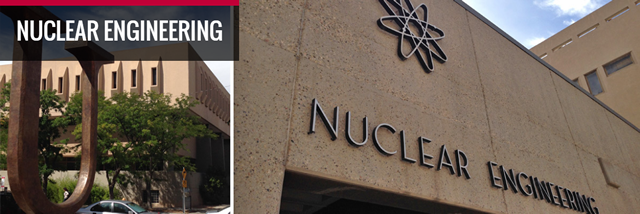
Nuclear Engineering ETDs
Publication Date
1-31-2013
Abstract
The use of several uncertainty quantification and propagation methodologies is investigated in the context of the prompt fission neutron spectrum (PFNS) uncertainties and its impact on critical reactor assemblies. First, the first-order, linear Kalman filter is used as a nuclear data evaluation and uncertainty quantification tool combining available PFNS experimental data and a modified version of the Los Alamos (LA) model. The experimental covariance matrices, not generally given in the EXFOR database, are computed using the GMA methodology used by the IAEA to establish more appropriate correlations within each experiment. Then, using systematics relating the LA model parameters across a suite of isotopes, the PFNS for both the uranium and plutonium actinides are evaluated leading to a new evaluation including cross-isotope correlations. Next, an alternative evaluation approach, the unified Monte Carlo (UMC) method, is studied for the evaluation of the PFNS for the n(0.5 MeV)+Pu-239 fission reaction and compared to the Kalman filter. The UMC approach to nuclear data evaluation is implemented in a variety of ways to test convergence toward the Kalman filter results and to determine the nonlinearities present in the LA model. Ultimately, the UMC approach is shown to be comparable to the Kalman filter for a realistic data evaluation of the PFNS and is capable of capturing the nonlinearities present in the LA model. Next, the impact that the PFNS uncertainties have on important critical assemblies is investigated. Using the PFNS covariance matrices in the ENDF/B-VII.1 nuclear data library, the uncertainties of the effective multiplication factor, leakage, and spectral indices of the Lady Godiva and Jezebel critical assemblies are quantified. Using principal component analysis on the PFNS covariance matrices results in needing only 2-3 principal components to retain the PFNS uncertainties. Then, using the polynomial chaos expansion (PCE) on the uncertain output quantities, the stochastic collocation method (SCM) is used to compute the PCE coefficients. Compared to the "brute force" Monte Carlo forward propagation method, the PCE-SCM approach is shown to be capable of obtaining the same amount of output quantity uncertainty information with orders of magnitude computational savings. Finally, the uncertainties quantified in the correlated model parameters for the suite of uranium and plutonium actinides are propagated through the Big Ten and Flattop assemblies. In the case of the k-effective uncertainties in the Big Ten assembly, the uncorrelated PFNS uncertainties leads to 17.5% smaller predicted uncertainties compared with the correlated PFNS uncertainties, suggesting the presence of these cross-isotope correlations are important for this application. Last, the unified Monte Carlo + total Monte Carlo (UMC+TMC) method is implemented to propagate uncertainties from the prior LA model parameters through the Flattop critical assemblies. Due to the fact that cross-experiment correlations are neglected in all of the present evaluation work, the UMC+TMC suffers by predicting smaller uncertainties in the integral quantities by an order of magnitude or more compared to direct sampling from the posterior LA model parameters.
Keywords
Prompt neutrons--Spectra--Measurement., Neutron transport theory., Spontaneous fission--Data processing., Uncertainty--Mathematical models.
Sponsors
U.S. Department of Energy: Nuclear Energy University Programs
Document Type
Dissertation
Language
English
Degree Name
Nuclear Engineering
Level of Degree
Doctoral
Department Name
Nuclear Engineering
First Committee Member (Chair)
de Oliveira, Cassiano
Second Committee Member
Coutsias, Evangelos
Third Committee Member
Talou, Patrick
Recommended Citation
Rising, Michael. "Quantification and propagation of nuclear data uncertainties." (2013). https://digitalrepository.unm.edu/ne_etds/19


